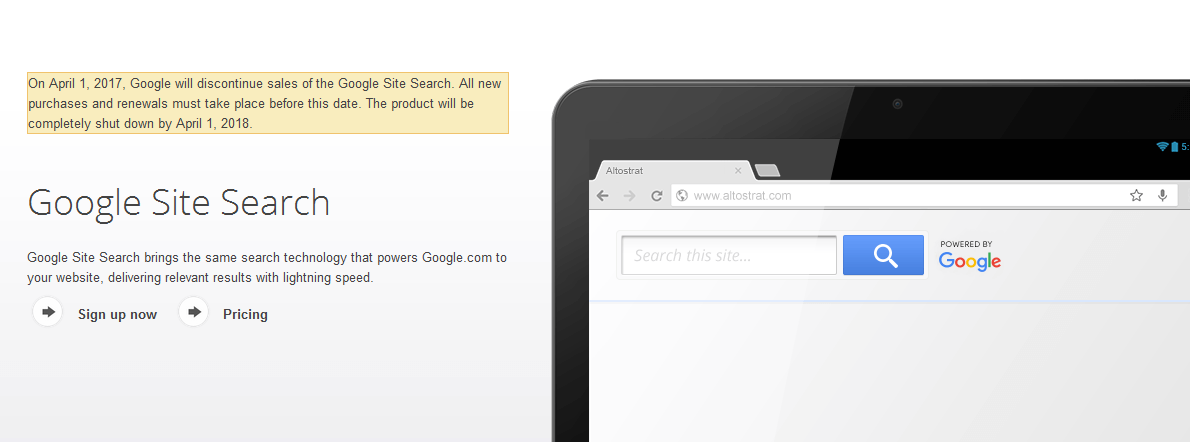
Google confirmed yesterday it was shutting down its Site Search service, which is the commercial version of the free service Google Custom Search, also known as Custom Search Engine (CSE).
Google announced the news with the following message, published on the Google Site Search website.
On April 1, 2017, Google will discontinue sales of the Google Site Search. All new purchases and renewals must take place before this date. The product will be completely shut down by April 1, 2018.
Site Search customers moved to CSE accounts
A Google spokesperson confirmed to Fortune that past April 1, 2018, or when current paid accounts reach their quota end, Google will move all Site Search customers to CSE accounts. This means website won't lose search functionality out of the blue.
Site Search and CSE are sister services that allow website owners to use Google's very own search technology to power search features for their sites. As an example, Bleeping Computer uses CSE for its search results.
Because the services, Site Search and CSE, are very similar, the transition from Site Search to CSE will be seamless.
CSE will show Google search ads in your site's search results
The main difference is that Site Search is a commercial offering, while CSE is a free service. The other difference is that Site Search showed only search results from the local site, while CSE inserts Google ads between your search results.
Google launched CSE in 2006. Two years later, the company launched the commercial Site Search offering. Site Search was priced on user search queries volume, and not per month.
Website owners who want to avoid showing Google's search ads in their site's search results should buy the necessary amount of Site Search queries before April 1, 2017, enough to last them for one year, until April 1, 2018.
After the final cut-off date, webmasters should look for another search technology if they don't feel comfortable blasting their users with ads that aren't under their control.
Comments
Post a Comment